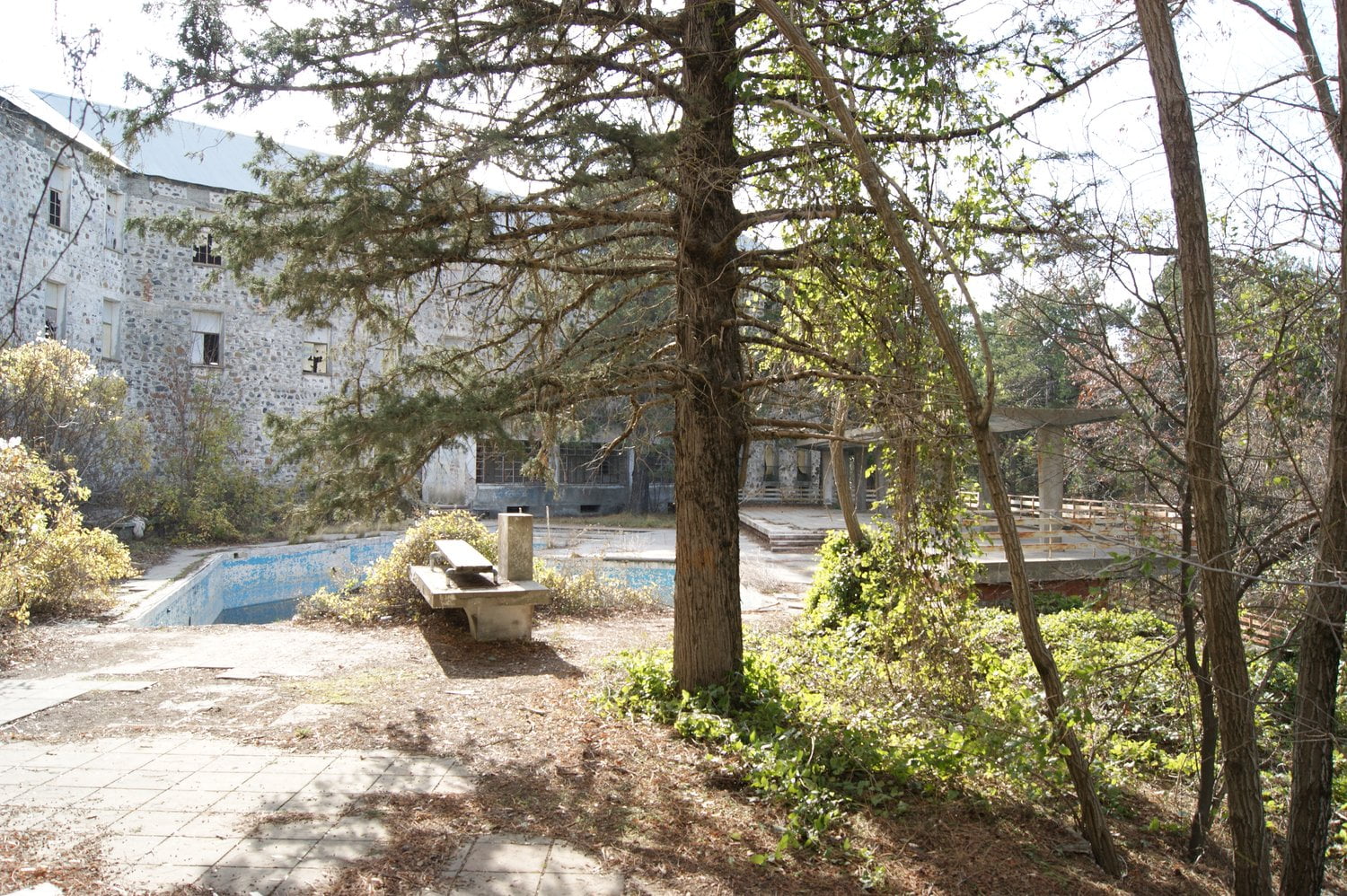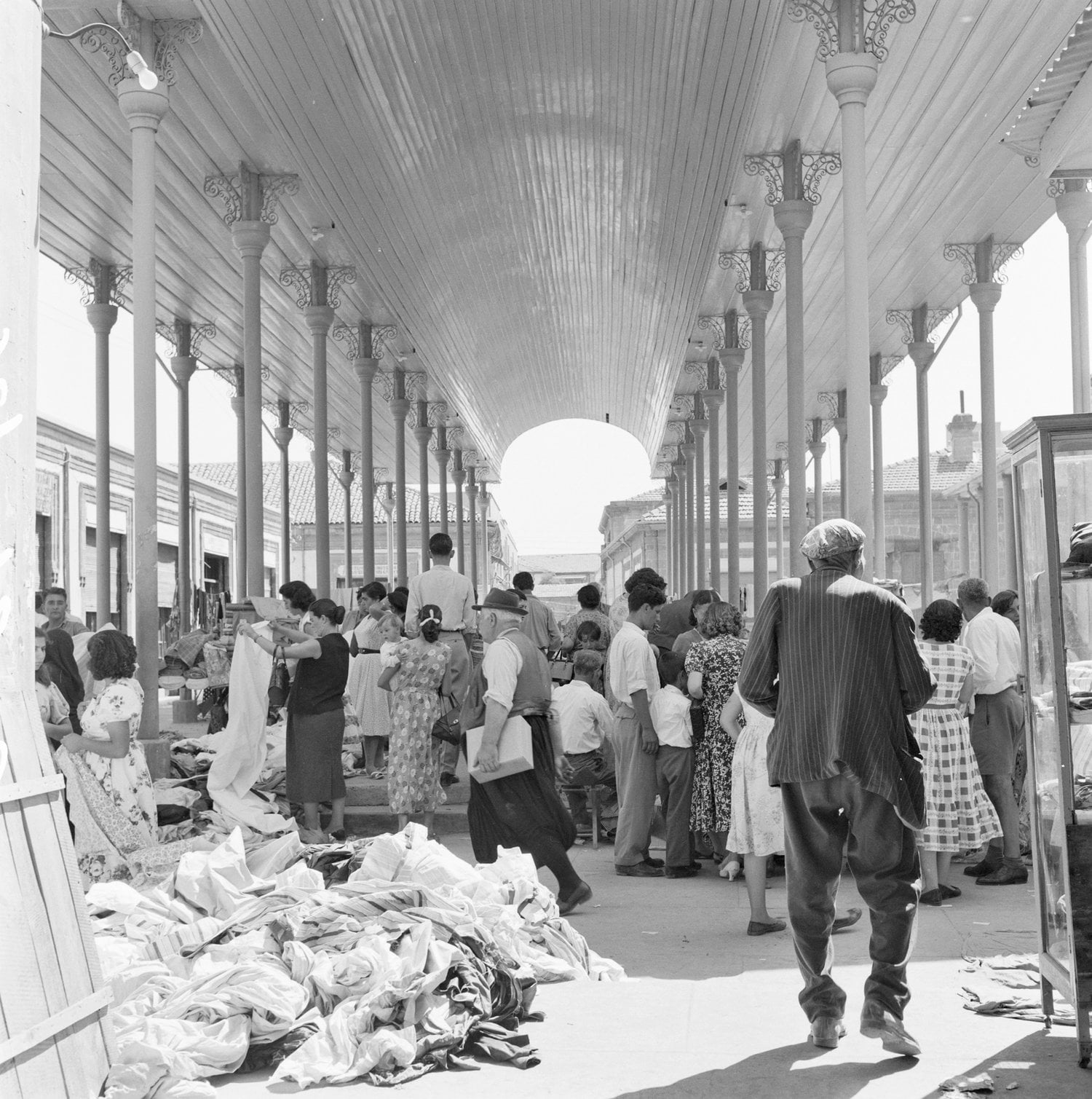MBC’s Andrea Potts spoke with researcher Savia Palate about finding an alternative history of Cyprus through its architecture. Savia holds a PhD in Architecture from the University of Cambridge and she is currently the principal investigator of “Uneasy yet Shared Heritage: Modern Architecture on a Divided Island” at the University of Cyprus.
Andrea: What is the focus of your research?
Savia: Currently, I’m working on a project about Cyprus that is called ‘Uneasy but Shared Heritage: Modern Architecture on a Divided Island’. I have an architectural background. I did my PhD in the UK in architectural history and theory, but I am from Cyprus. During COVID, I returned to my home country and I realised that I wanted to research architecture here. My focus is on architecture built in the first half of the 20th century, which can be separated into two broad political categories: when Cyprus was still a British colony and when it gained independence. There was a lot of conflict between the two major communities on the island – Greek and Turkish Cypriots – since the late 1950s. In 1974, the island was de facto divided and for this, the history of Cyprus is often associated with conflict. In my project, though, I am trying to identify histories that interrupt this narrative, and instead point to a shared architectural heritage.
I started looking at buildings that can be characterised as shared spaces. I mean that literally, in terms of instances when the two communities were coexisting in these spaces. That could be at the same time or one building being ‘shared’ across different time periods. But also in terms of finding similarities between how each community used the built environment. One aspect of this is how notions of sharedness become visible when you look at histories of marginalised groups, such as the impoverished or women. The poor had to find ways to survive, and that included coexistence and collaboration beyond ethnic differences. These histories can be found through architectural histories. For example, one building I look into is the women’s bazaar in Nicosia, where women were allowed to gather on Fridays and could act as merchants. Women of all ethnicities interacted in this one space at a time when women were still restricted in their own domestic environment. I’m trying to find stories like this that are not visible if we just read the architecture of a building. In fact, this shed is now demolished.
“These uses of space can be understood as little acts of resistance to the British.”
Another example of this is the Berengaria Hotel. British officials were very reluctant to allow a hotel to be built as they did not want to encourage a tourist industry. They did not think that it would be profitable in the early twentieth century in Cyprus. Their reluctance can be seen in the official archives. In newspapers, though, local Cypriots ignored this and worked together to convince the British colonial government to allow the owner to build the hotel. It’s interesting because they made no reference to tourism or tourists in the newspapers. They used a Greek word that translates as the “industry of the foreigners.” I think of this as another small act of resistance, even if the hotel’s architecture does demonstrate colonial features for various reasons. It was Cypriots who really pushed forward with developing the tourism industry, and they sought to avoid the attention of the British. Cypriots saw the potential to gain financial independence from tourism and they built a luxurious hotel. The hotel ceased its operation in the 1980s and it is still abandoned.

The abandoned Berengaria Hotel
A: Could you speak more about the dominant ways of reading the architecture that you’re trying to challenge?
S: Yes. As an architectural historian, the first step in research is to dig into the archives. And often these archives are official documents, produced by British officials or later, the state. If the building is still standing, you can visit it and read the architecture yourself, and you can see the various influences on architectural styles in Cyprus in the twentieth century. That may be British colonial, vernacular, or modernist, among many others. These research methods and sources tell one story. It is also quite hard work because many documents from the colonial period were lost; even the buildings were demolished or left in ruination. For the two buildings mentioned earlier, I started looking into newspapers, which provide insights into how these buildings were used by Cypriots, which again, unfortunately, it is not much information.
“Many documents from the colonial period were lost; even the buildings were demolished or left in ruination.”
A: Have you found ways to work around that?
S: Well, one part of my project is to try to develop other methodological tools based on these challenges. A major part of the project is to develop an app that, on the one hand, functions as an architectural guide of modernity in Cyprus and, on the other hand, employs crowdsourcing principles and allows the public to upload and share their own memories of these buildings. This will hopefully become an informal archive that gives insights into what was not recorded in the official archives or has been lost.
A: How does the fact that you are Cypriot affect your work?
S: That’s a very interesting question because it has a big impact. My ethnic background is Greek Cypriot. Obviously, you already have engrained narratives in your own understanding of the past and you have to deconstruct them and be very open.
A: And what drew you to architectural history?
S: I started studying architecture, and most architecture students will go on to join a firm, like I did. But after two years I decided that I prefer the history and theory of architecture. I was more interested in the process of creating architecture and the intangible stories behind architecture: what happens in the life of a building after the architect has left. I think that it is generally useful for architects to know how a building is used so that you can evaluate your work and improve it. So I’m trying to listen to those people who experience these buildings.
“I was more interested in the process of creating architecture and the intangible stories behind architecture: what happens in the life of a building after the architect has left. ”
A: So through all of those different strands of your research, what contemporary impact do you think this work will have? Why emphasise sharedness?
S: It’s important to include some positive histories about what we Cypriots have in common that can counter those of hatred and conflict, even if they are small-scale and temporary. In Cyprus, we have been focusing on writing histories of conflict and difference, and we dismiss what we have in common. So, if we can add a new perspective into our understanding of “uneasy heritage,” then this is one way to start envisioning another present and, if possible, another future. That also doesn’t mean that we should be naive about the function of these histories. We cannot entirely remove the dominant narrative, which is the one of conflict. But maybe we can stop thinking about our history in terms of binaries and start to see the small-scale histories of everyday lives where there were moments of sharedness and connectedness.

 The women’s market in Nicosia, Cyprus
The women’s market in Nicosia, Cyprus